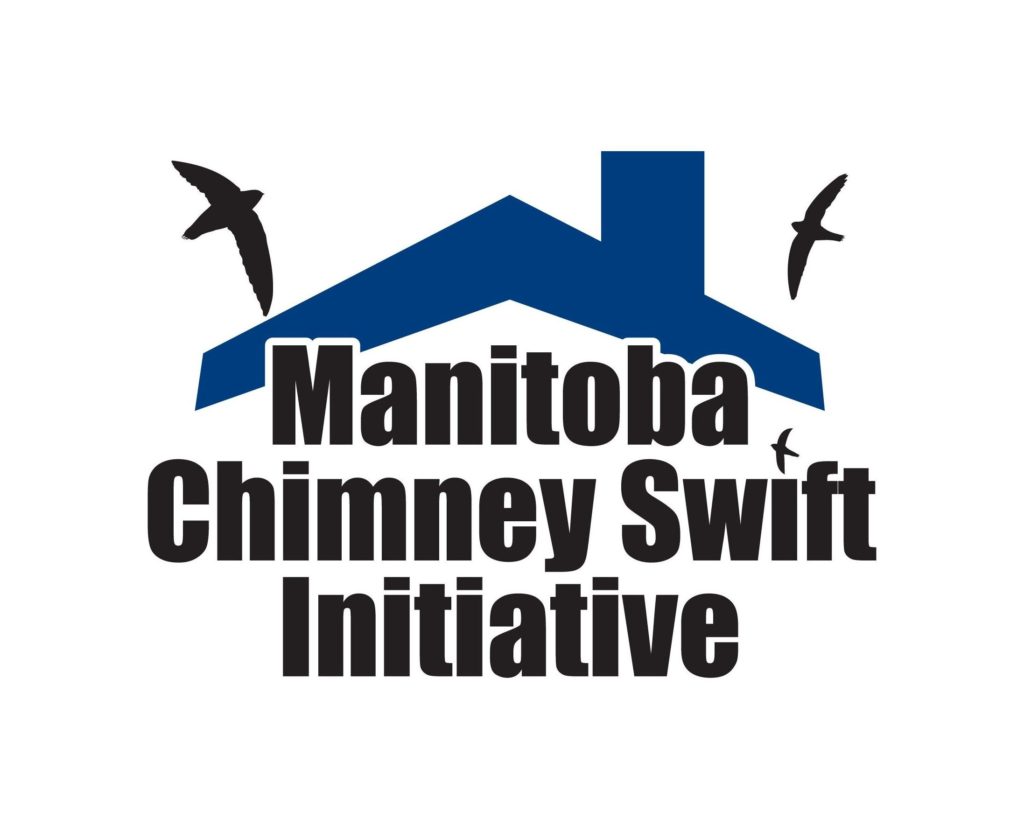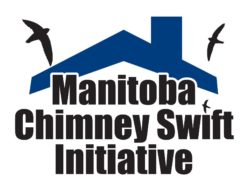Swift Science – Manitoba Research Rundown (Part 1)

This month on the blog, we want to highlight some of the exciting, cutting-edge Chimney Swift research that has been coming out of Manitoba! Barb and Rob Stewart have been studying the swifts in St. Adolphe every year since 2007 at 5 nesting sites: The Church, Brodeur Bros (now a daycare), Main St (a private residence), and two chimneys at Club Amical (SE and NE). Their diligent efforts to monitor all five of these nesting sites year after year, throughout the breeding season, have generated quite the impressive dataset. Getting the data is only the first (very important) step in the research process. The next (also very important) step is to analyze the data, which is often undertaken by a team of researchers.
Part 1 of our Research Rundown will dive into a study published in 2023 in The Canadian Field Naturalist by Tim Poole, Barb Stewart and Rob Stewart, in which they joined forces to investigate the impacts of human disturbance on nesting Chimney Swifts. Part 2 of our series (coming next week) will focus on another study published by Rob and Barb in Blue Jay in 2023 which looked at how other factors, namely weather, impacted nesting Chimney Swifts.
This paper looked at five instances of anthropogenic (human) disturbance on nesting Chimney Swifts in St. Adolphe. The types of disturbance included building construction, building demolition, interior renovation, and rooftop repairs. They wanted to know – Do different types of human activities affect Chimney Swifts differently? Does a repair on the same building as the nesting chimney have the same impact on swifts as a repair on an adjacent building?
They decided to investigate these questions by comparing the behaviour of the swifts during the disturbance with what the expected behaviour of swifts at that nesting stage would be without disturbance. Of course, this requires being able to figure out which nesting stage the swifts are at and knowing the baseline ‘expected behaviour of swifts’ at each of these nesting stages. This is where the precious monitoring data comes in.
By recording the frequency and timing of entries and exits by swifts at a site (as all volunteers do when monitoring a swift site), we can gather important clues on what stage of the breeding season they’re at. The number and sequence of entries/exits per hour can indicate if the birds are nest-building, incubating, feeding brooded or non-brooded young, or if the young are fledging. We now have good estimates of what the ‘expected’ numbers of entries/exits are at each stage, and how many days each stage of the breeding cycle lasts. Because of the short breeding season here in Manitoba, the Chimney Swifts are on a tight schedule – they must arrive, build their nest, lay and incubate their eggs, and raise and fledge their young, all before the temperatures and insect numbers drop again in late summer/fall.
The first case studied was at the Main St. site (the private residence). In 2012, a three-story condo building was being constructed on a nearby lot (30 m away from the nest site). The construction lasted the entire breeding season. While there were some behavioural changes, such as the swifts changing their flight path to go around the condo instead of over it, the overall nesting behaviour appeared normal and the breeding attempt was successful.

A Chimney Swift dropping into the Main St. site during a roosting hour monitoring session. Photo by Rob Stewart.
The second case study focused on the Church. In 2017, a personal care home on the lot beside the Church was demolished. Most of the demolition took place on one day (May 23), but site clean-up continued until the end of June. Throughout, there was a lot of dust and dirt in the air. Overall, Chimney Swift behaviours appeared normal and the breeding attempt was successful.
The third case study was an interior building renovation at Brodeur Bros. In 2019, this building was converted from a car dealership to a daycare over the course of the summer. While the nesting chimney remained accessible to swifts during these renovations, the noise levels were often very high. During these noisy periods, Barb observed fewer entries into the nesting chimney. When noise levels returned to normal, Barb observed either the expected or high numbers of entries, indicating that the adults were likely compensating for the reduced number of entries during the earlier noisy period.
While these interior renovations were going on, some heavy rain led to the discovery of leaks in the building, which prompted emergency rooftop work. This rooftop activity was treated as a separate case study from the interior renovations. The rooftop activity occurred on June 10-12, June 27, and July 15. When workers were on the roof, there were no entries by Chimney Swifts. When workers were not on the roof, the number of entries was as expected. Unfortunately, the Brodeur Bros nest failed.
The fifth case study focused on rooftop repairs at Club Amical in 2016. Club Amical has two nesting sites, referred to as the SE and NE chimneys. The repairs took place on July 11, 12, and 14. On July 13, there was heavy rain. Low numbers of entries with and without workers around revealed that the NE chimney nest failed on July 16. The SE chimney showed a slightly lower entry rate when workers were present compared to when there were no workers, but overall, the rates were higher than expected – this was due to the presence of a ‘helper’, a third swift that was helping with the parental duties. Unfortunately, the SE nest also failed, but on July 19.

The SE (left) and NE (right) Club Amical chimneys. Photo by Barb Stewart.
Main takeaways
Overall, these case studies suggest that Chimney Swifts are not strongly impacted by human disturbance that takes place on adjacent lots. However, they do seem negatively impacted by disturbance that occurs inside or outside the same building as the nest chimney. In this study, in all three cases with disturbance in or on the same building as the nesting site, they observed reduced parental care and subsequent nest failure.
Based on their findings, Barb, Rob, and Tim came up with best practices to limit the negative impacts of human disturbance on swifts. The main takeaways are the importance of avoiding loud noise and rooftop activity in and on the building with the nest chimney during the breeding season, and the importance of developing positive relationships with property owners. They also highlighted the importance of monitoring nest sites without disturbance to establish the baseline behaviour of the birds, and monitoring during the disturbance to see whether the behaviour changes.
Overall, community outreach is a key piece of this puzzle and where Manitoba Chimney Swift Initiative plays an important role. By raising awareness of Chimney Swifts and how to consider their safety during building construction activities, we can improve their likelihood of success.
That’s all for this week. Stay tuned for part 2 coming next week!
Thanks!
– Marissa

One thought on “Swift Science – Part 1”
Comments are closed.